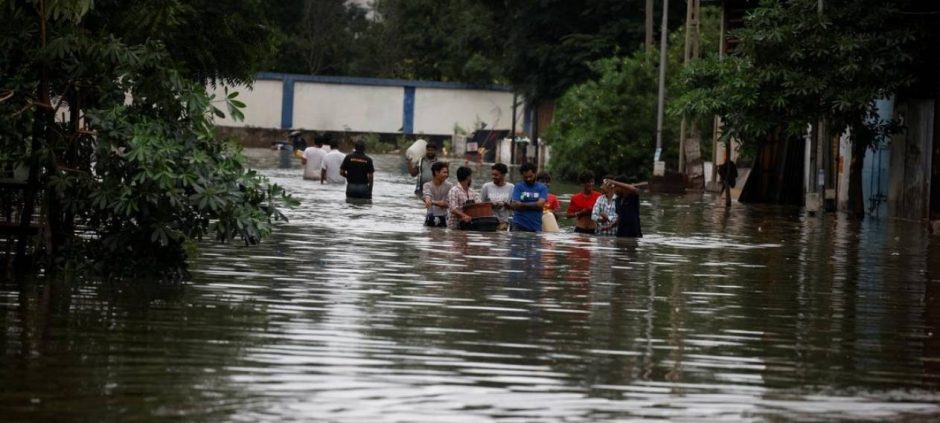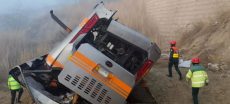Karachi, Pakistan’s largest city, faced severe flooding after heavy monsoon rains. The floods have caused deaths, displacement, and widespread damage. In this blog, we will explore the causes, impact, and safety measures related to the Karachi floods.
Overview of the Karachi Floods
The death toll from rain-related incidents in Karachi has risen to eight. Over 300 people were relocated to safety after heavy monsoon showers. The Malir and Lyari rivers swelled due to the rains.
These two rivers serve as Karachi’s main storm drains. They carry rainwater through nullahs into the Arabian Sea. Once natural streams, urban expansion and encroachments have reduced their capacity.
Solid waste and construction block many drains. This has turned them into open sewers. The blockage causes urban flooding during heavy rains.
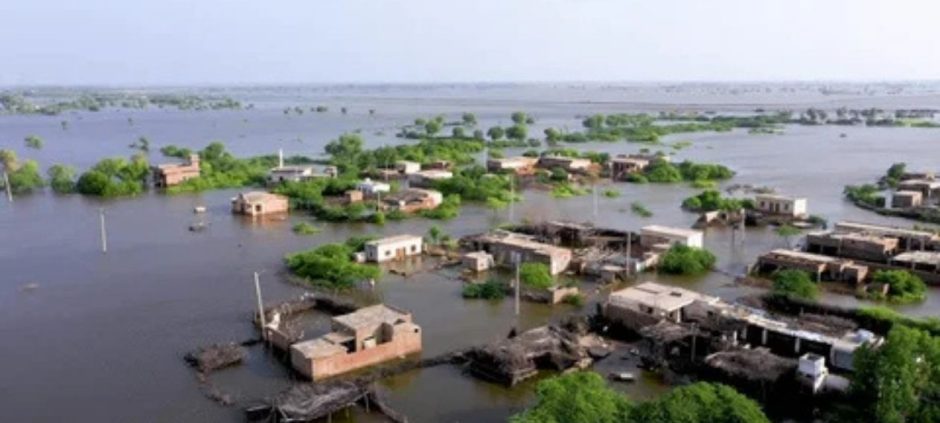
Recent Rainfall Data in Karachi
According to the Pakistan Meteorological Department (PMD), rainfall in Karachi was uneven but heavy. Some areas received over 30 millimetres of rain:
- Defence Housing Authority Phase 7: 32.6 mm
- PAF Masoor Base: 20 mm
- Keamari: 19 mm
- Korangi: 18.9 mm
- Gulshan-i-Maymar: 16.9 mm
Other parts like Nazimabad, Bahria Town, and Airport areas received lower rainfall but were still affected by waterlogging.
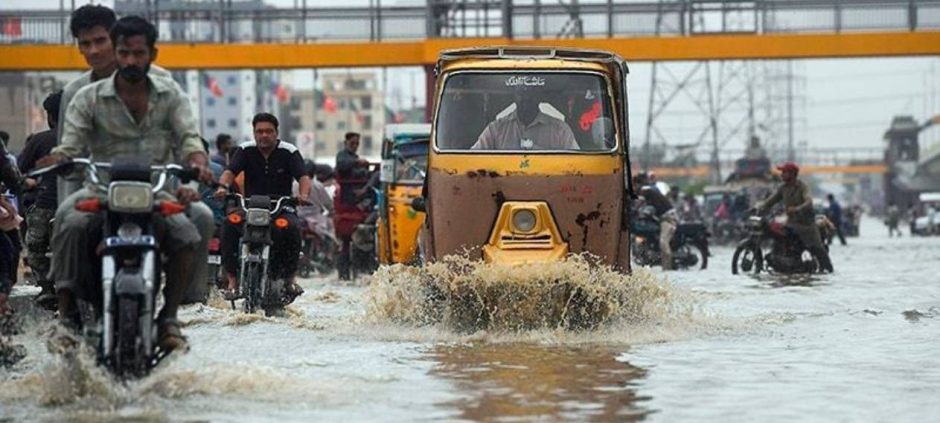
Human Impact of the Floods
The floods have had a severe impact on Karachi’s residents:
- Eight people died in rain-related incidents.
- Three people remain missing, including Farhan Akram from the Malir river.
- Several families were evacuated from low-lying areas.
Edhi Foundation rescuers recovered three men and a woman after a van fell into the Konkar Nadi in Gadap Town. Rescue 1122 and the Pakistan Army have been actively saving citizens from flooded areas.
Areas Most Affected
Floodwaters have entered multiple neighborhoods:
- Saadi Town: 318 people relocated to safe locations.
- Lyari and Malir rivers overflowed, affecting nearby communities.
- Shahrah-i-Bhutto Expressway (Malir Expressway) is under construction and partly submerged.
Deputy Mayor Salman Abdullah Murad and Sindh CM Murad Ali Shah visited the affected sites. They assured the public that critical infrastructure was being monitored and restored.
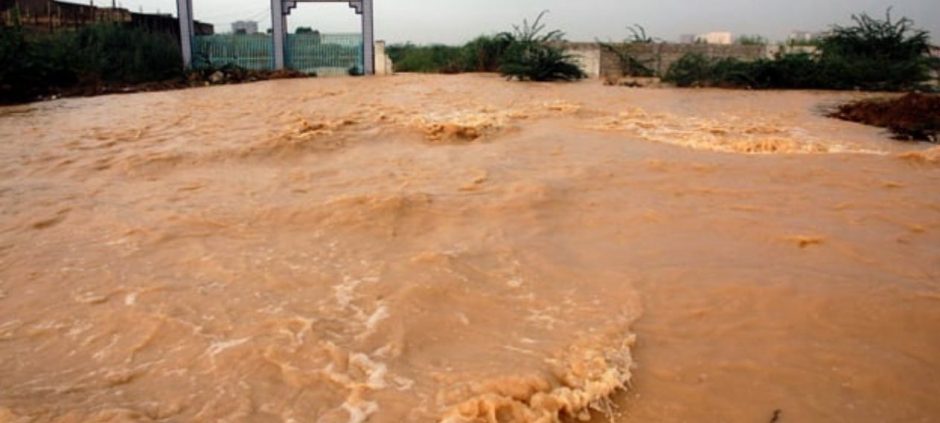
Government Response
The Sindh government and federal authorities have taken action:
- Schools in Karachi Division remain closed for safety.
- NDMA and SDMA are assisting in relief operations.
- PM Shehbaz Sharif directed authorities to expedite rescue and rehabilitation.
- Rescue teams are clearing underpasses and major city arteries.
CM Murad Ali Shah inspected the Lyari river, Jinnah Avenue, and Saadi Town. He confirmed that water flow in Lyari and Malir rivers is high but manageable.
Causes of Karachi Floods
The floods are caused by a combination of natural and human factors:
Natural Causes
- Heavy monsoon rains in Karachi and surrounding areas.
- Overflow from Thado and Lath Dams contributing to waterlogging.
- Human Factors
- Urban sprawl and illegal encroachments on rivers and nullahs.
- Solid waste and debris blocking drains.
- Unplanned construction along riverbanks reducing water capacity.
These factors amplify flooding even with moderate rainfall.
Safety Measures During Floods
Residents should follow safety guidelines during the Karachi floods:
- Avoid walking or driving through floodwaters.
- Move to higher ground if near rivers or streams.
- Follow updates from PMD and local authorities.
- Keep emergency numbers handy: Rescue 1122, Edhi Foundation, Pakistan Army.
- Avoid using electricity in waterlogged areas to prevent shocks.
Authorities advise people to cooperate with rescue teams and remain patient.
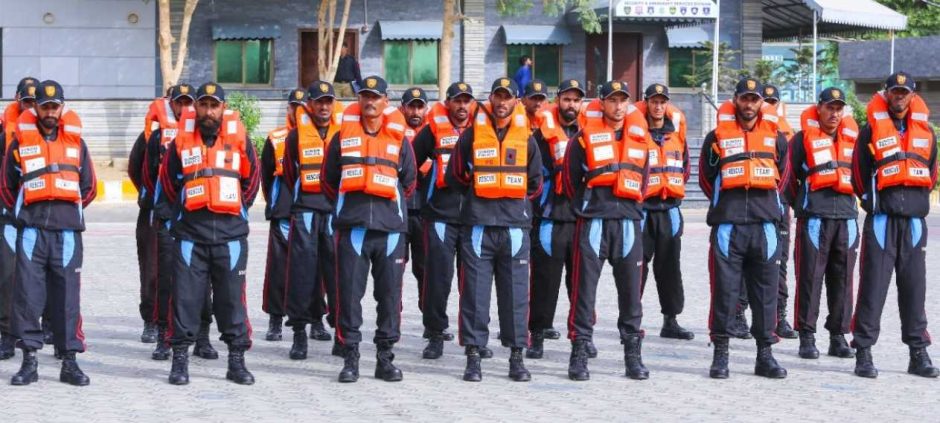
FAQs About Karachi Floods
Q1: Why do Lyari and Malir rivers overflow?
A1: Blockages from debris, waste, and urban encroachments reduce their capacity.
Q2: Are schools open during the floods?
A2: All schools in Karachi Division are closed until further notice.
Q3: How many people have been rescued?
A3: Over 300 people have been relocated to safety by rescue teams.
Q4: Will the flood situation improve soon?
A4: If there is no more rain in the next 24-48 hours, water levels should reduce gradually.
Conclusion
The Karachi floods are a serious reminder of the city’s vulnerability to monsoon rains. Urban encroachments, blocked drains, and overflowing rivers worsen the situation. Rescue operations and government intervention have saved hundreds of lives.
Citizens must stay alert, follow official instructions, and help each other during emergencies. Proper urban planning and waste management are essential to reduce future flood risks.
The recent floods show that immediate action and community cooperation are vital. Authorities, rescue teams, and residents must work together to minimize damage and protect lives during Karachi’s monsoon season.

